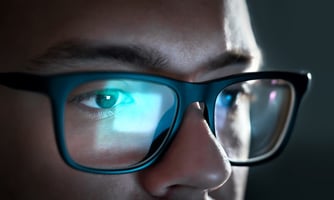‘Smart Glasses’ May Help Improve Social Behavior in Children With ASD
 |
“Autism behavioral therapy is effective but expensive and difficult to access,” wrote Catalin Voss, M.S., and colleagues at Stanford University. “Learning aids based on novel ubiquitous technologies using machine learning can begin to address these problems by creating opportunities for therapy that are accessible outside of the clinician’s office.”
The intervention used in this study, known as Superpower Glass (SG), was deployed via Google Glass. When the device’s camera detects a face, a visual representation of the person’s facial expression is shown on the glasses’ monitor using emojis (audio voice cues can also be enabled). The technology recognizes eight emotions: happy, sad, angry, scared, surprised, disgust, “meh,” and neutral.
The glasses are also linked with a mobile app programmed with three social engagement activities to encourage the children to use the devices. The activities include a game that prompts children to find certain emotions, such as telling a joke to elicit a happy face; a “guess the emotion” activity; and a “free play” mode in which the child receives cues for everyone they interact.
Voss and colleagues enrolled 71 children with ASD aged 6 to 12 years to test the SG system; 41 of the children were given the wearable intervention, and 30 were in the control group. Both groups received standard behavioral therapy at home during the six-week study; the children in the SG group were also tasked to use the device at home for 20 minutes four times a week: three times with family members and once with their behavioral therapist.
After six weeks, the children in the SG group showed significant improvements in their social behavior scores (measured with the Vineland Adaptive Behaviors Scale socialization subscale) compared with the control group. The children using SG also showed greater improvements with other assessments such as the Social Responsiveness Scale, second edition (SRS-II), but these did not reach statistical significance.
“This is the first randomized clinical trial to demonstrate efficacy of a wearable behavioral intervention for children with ASD, to our knowledge,” Voss and colleagues wrote. “Results of this study underscore the potential of digital home therapy to augment the current standard of care.”
To read more about smart glass interventions, see the Psychiatric News article “Smart Glasses May Improve More Than Eyesight in Children With ASD.”
(image: iStock/picturejohn)






